Nine million children in the U.S. are living with hunger. That’s 1 in 8 young people. Hunger is a serious problem in this country, and although research has shown that households that have older kids experience higher rates of food insecurity than households with younger children, most of what we know about childhood hunger focuses on younger children and not teenagers. At No Kid Hungry, we want to show the whole picture.
WHAT DO TEENS REALLY THINK ABOUT SCHOOL MEALS?
“A [teen] who’s hungry [can’t] do their schoolwork, and somebody who’s failing in school doesn’t have the motivation to participate in school anymore—whether that’s from middle school, from high school—that kid drops out because he wasn’t being fed. If you’re hungry, how are you going to have the energy to participate in school, the brain cells to participate in school, to do great in school?”
Isabel MirandaNo Kid Hungry Youth Ambassador Alumna, Hunger Task Force, Milwaukee, WI
When teens don’t get enough to eat, this not only impacts their academic performance and reduces their chances of graduation, but it also affects their overall physical, social and emotional well-being.
Research has shown that youth thrive when they eat school and community meals, but there’s a participation gap among teens compared with younger children. There’s also a tendency to focus more on elementary-aged students when it comes to improving the school meals experience. At No Kid Hungry, we recognize the importance of tackling hunger from a variety of perspectives in order to ensure that all young people receive the benefits of child nutrition programs. That’s why we need teenagers to take part in the conversation.
In May 2022, with the support and expertise of FM3 Research, we found out what middle and high school students think about school and community meals by interviewing 1,000 teens across the U.S.
Our goal was threefold— (1) to better gauge teens’ perceptions of school and community meals; (2) to determine if and how schools are working with teens to improve these programs; and (3) to find out how much teens want to be engaged in improving the school and community meals experience.
Our 12 to 18-year-old survey participants come from all walks of life and socio-economic backgrounds. Most students racially identified as either Caucasian or Latino. Thirty-six percent said they live in urban areas while 37% live in the suburbs, and 84% said they attend public schools.
In addition to sharing the online survey results, we conducted in-person interviews with teens across the country to find out what they really think, and their candid responses are included in this report.
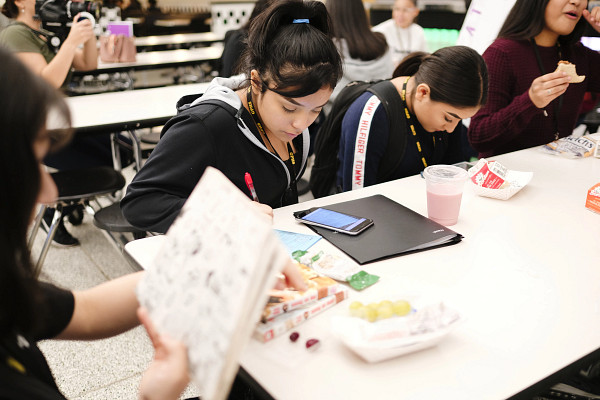
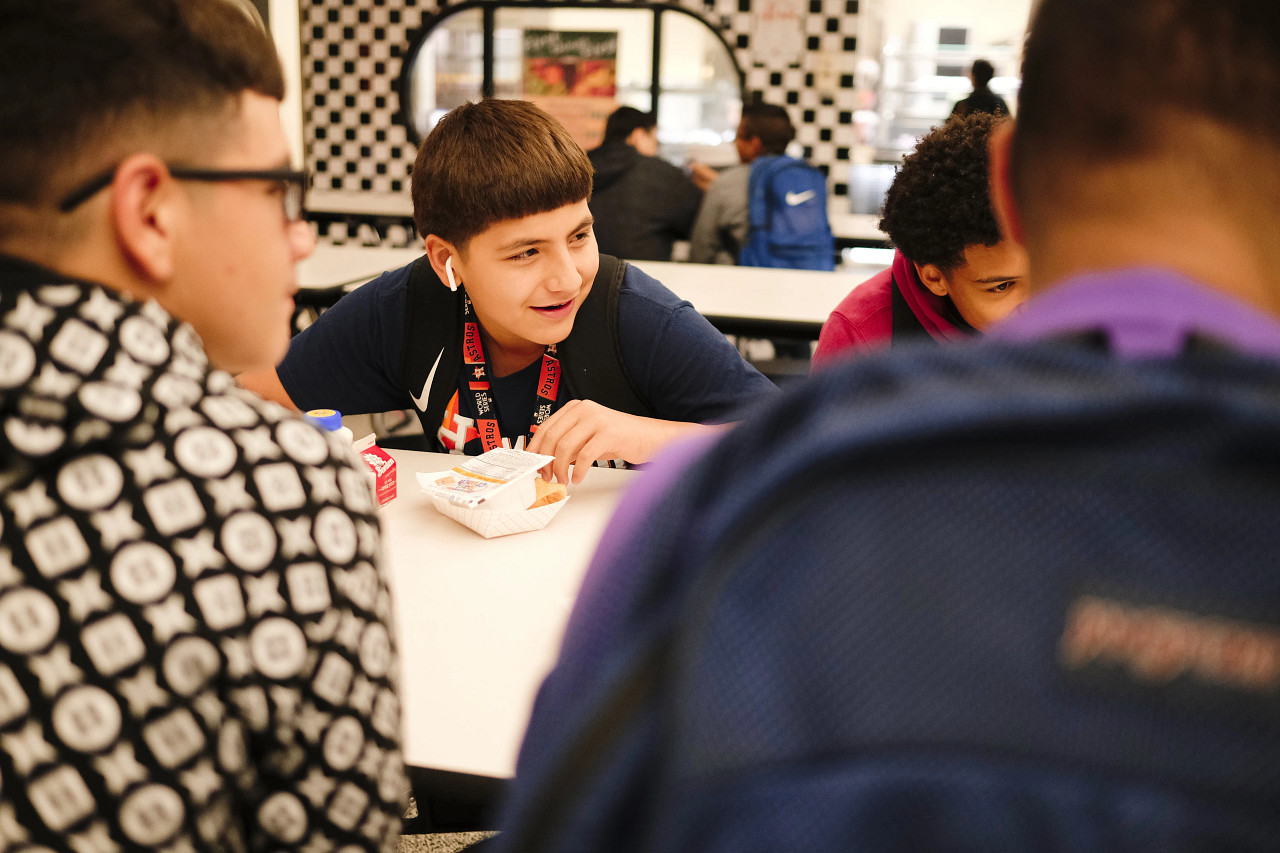
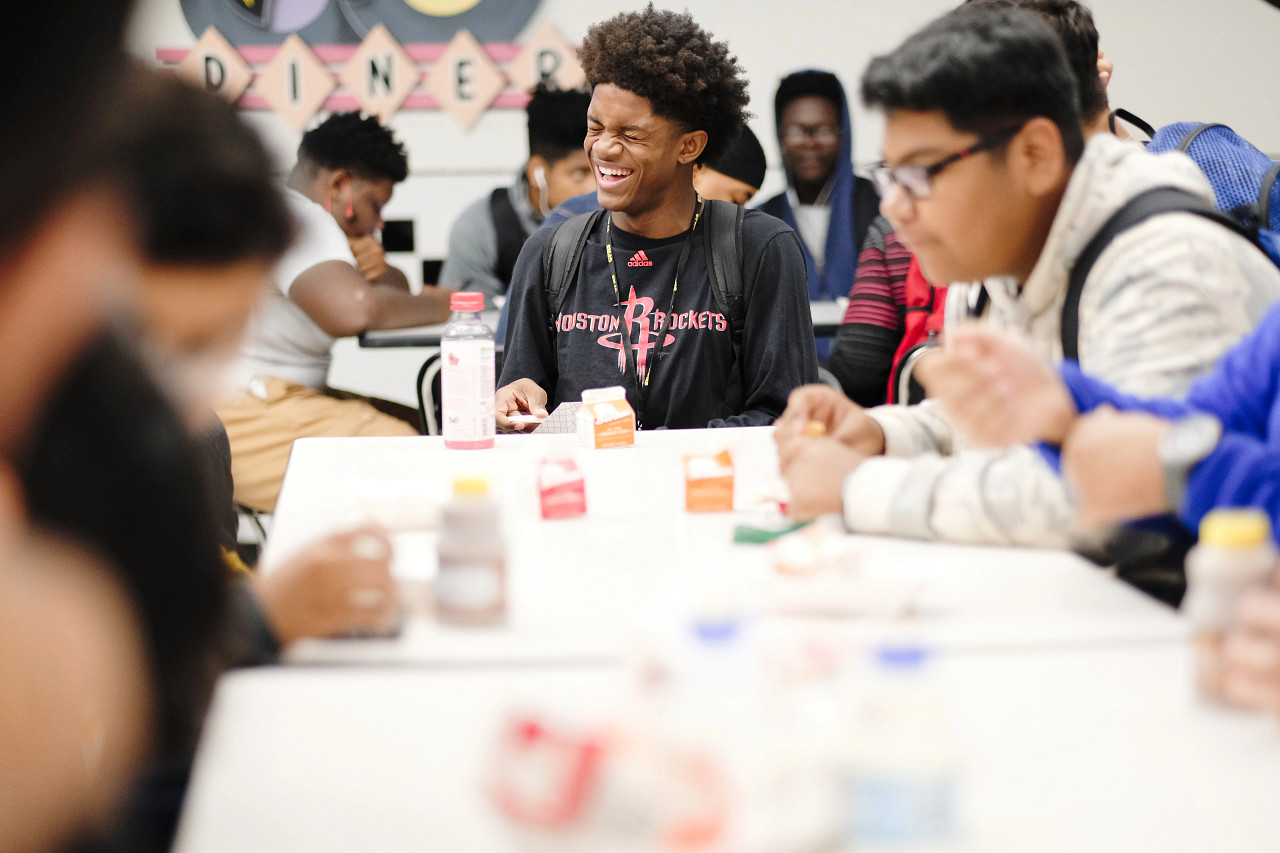
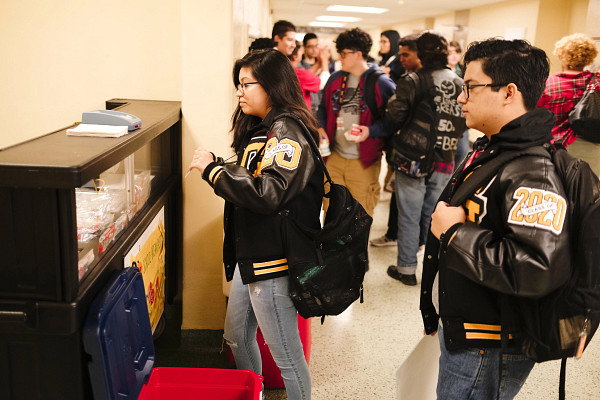
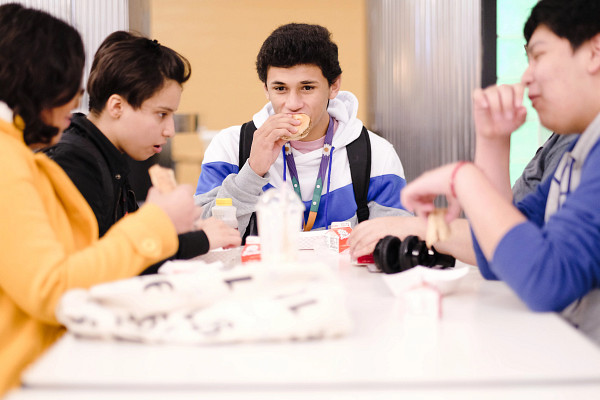
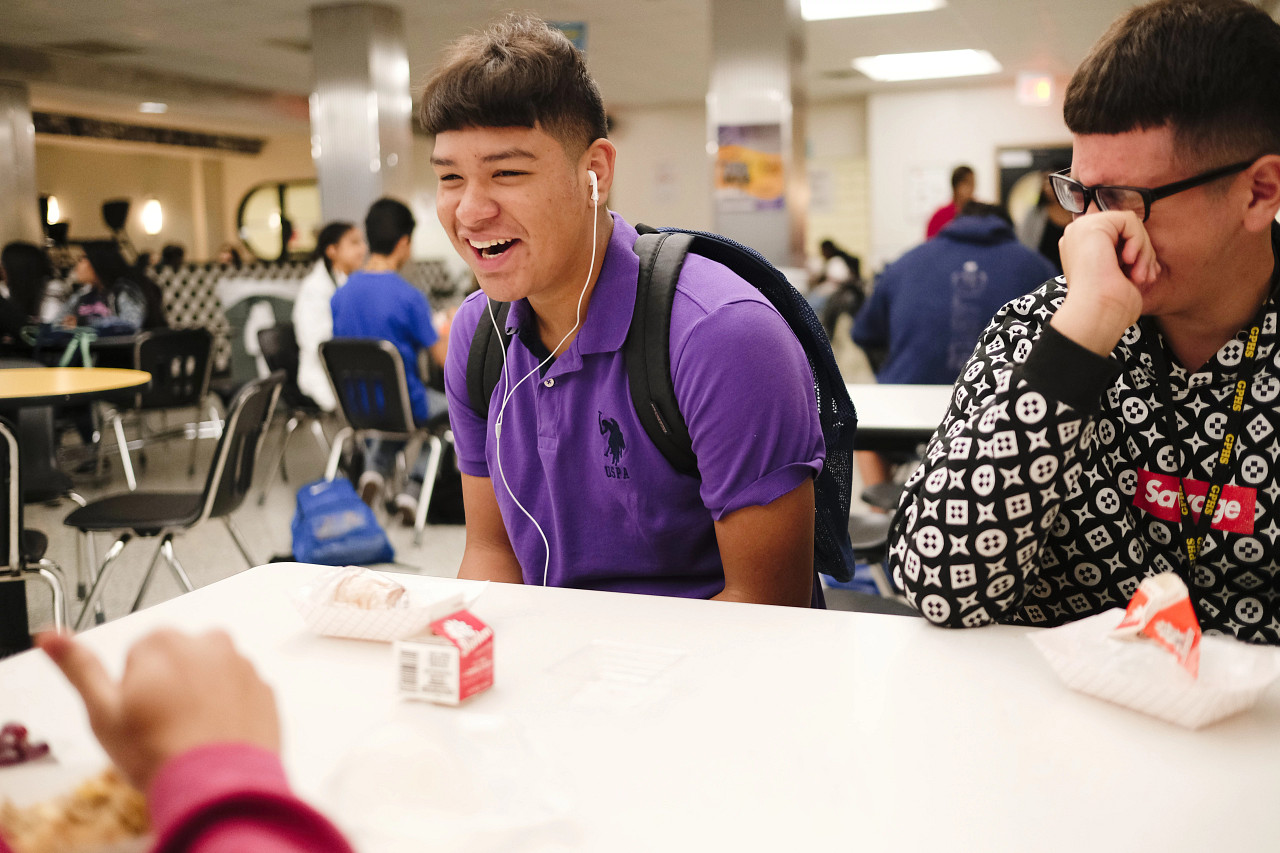
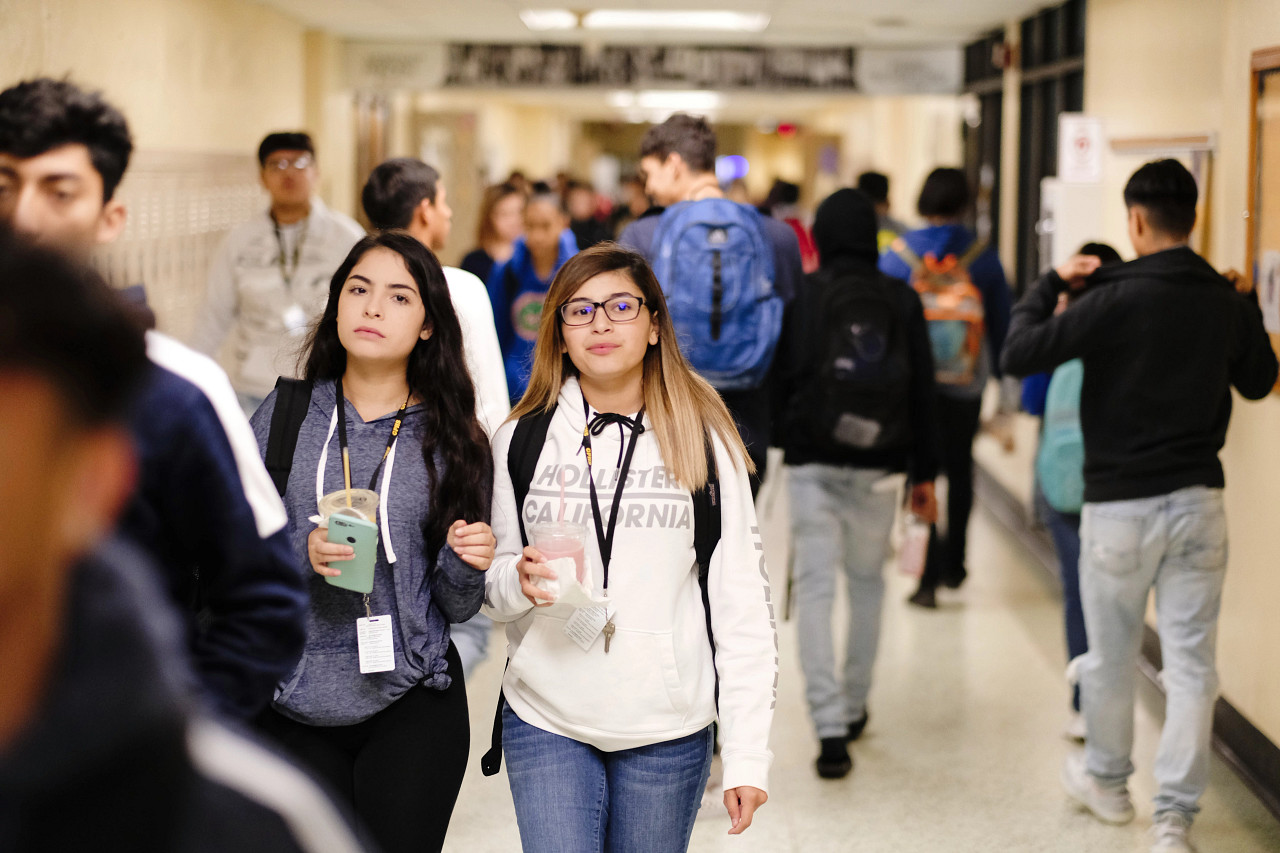
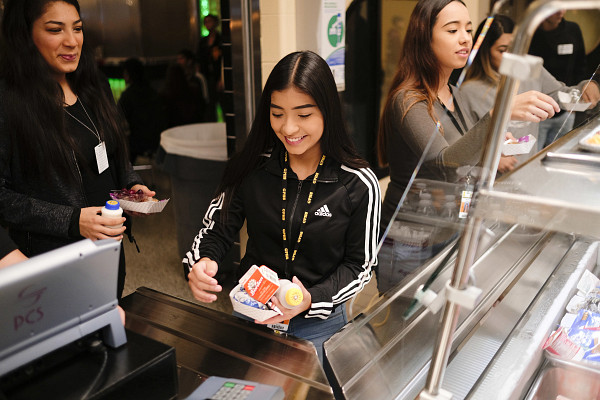
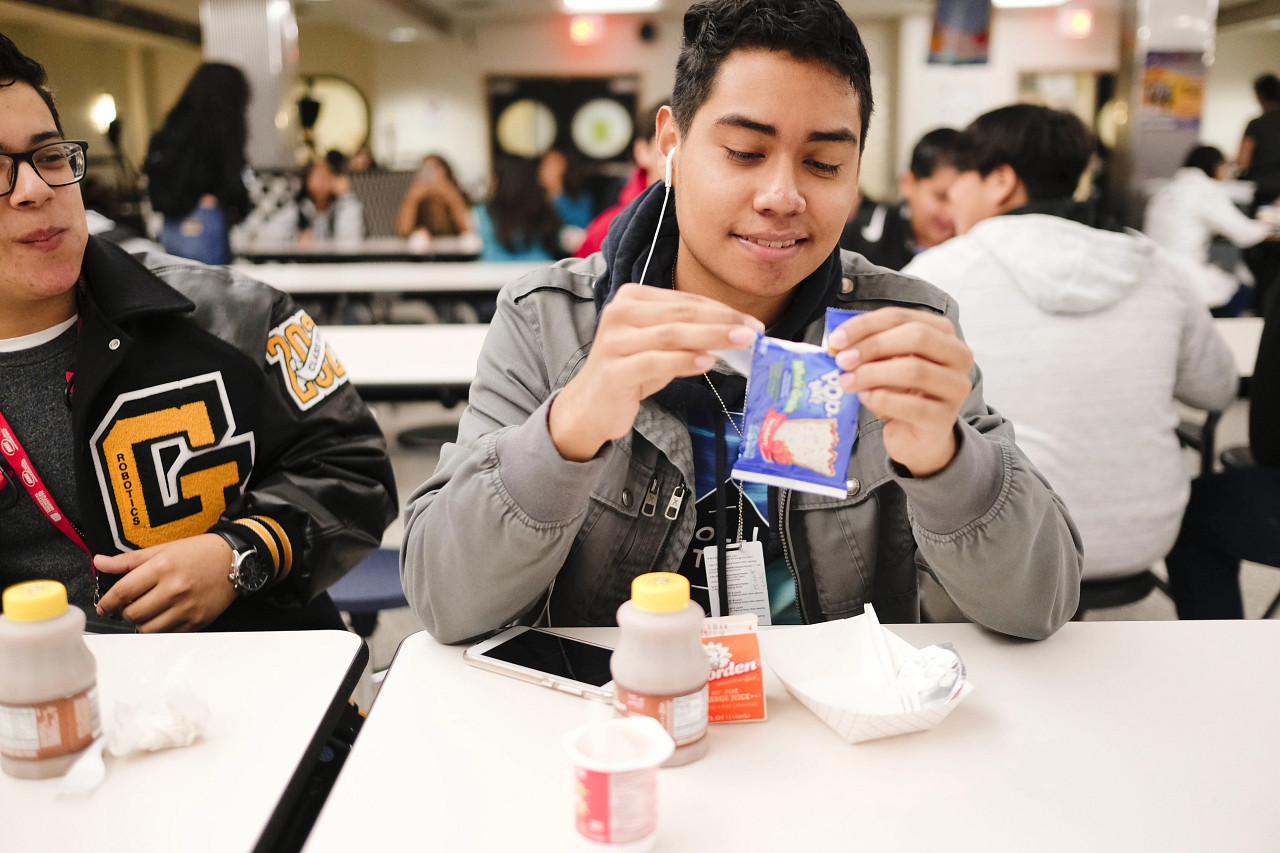
Key Ingredients for a Positive School Meals Experience
Schools are more than educational spaces. They’re also integral to ensuring that all children, regardless of where they live or their economic circumstances, have access to healthy food that benefits their physical, mental and social development.
The Covid-19 pandemic reminded us about the critical need for school meals, especially for those whose families were struggling to make ends meet. But even before the pandemic, 59% of teens said they ate school meals every day. Across the country, 52% of public school students are eligible for free or reduced-price meals. According to our survey participants, more than four in five teens said that the school meals they ate were free or reduced-price. Most of the teens we surveyed said that they were likely to get school meals, despite the stigma that these programs are only for low-income families.
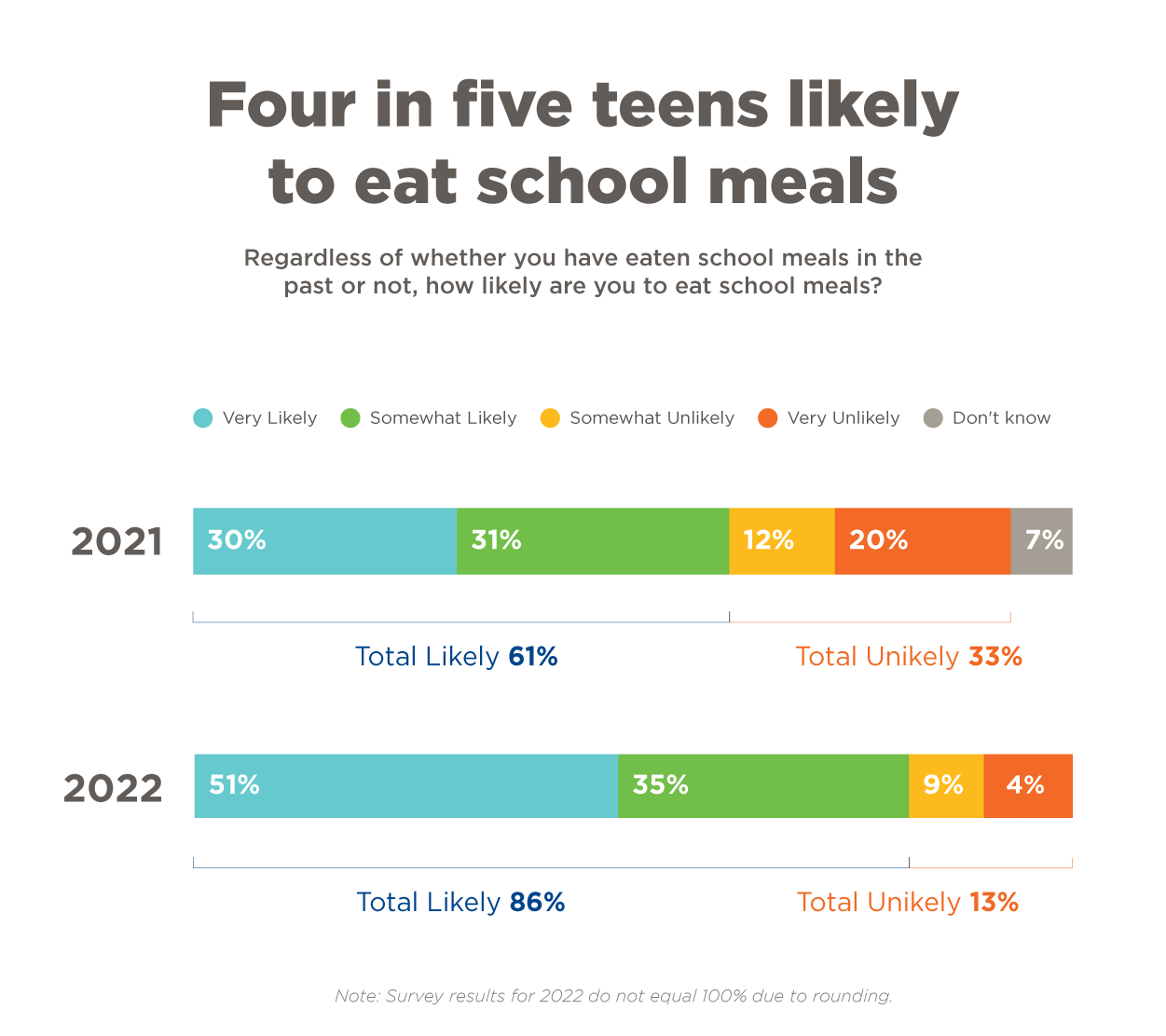
59% of teens said they ate school meals every day before the pandemic.
72% of teens said school meals gave them a chance to build friendships and community with other students.
One of the many influential factors was the opportunity to eat and socialize with other students. Social interaction is an important part of the adolescent experience, and now that 84% of young people have returned to in-person school activities compared with 2021, they’re excited to reconnect with their peers. It’s no surprise that this played a big factor in teens’ positive perception of school meals when 72% reported that they gave them a chance to build friendships and community with other students.
In addition to opportunities for socialization, teens ranked convenience and affordability as other primary factors that would make them more interested in getting school meals. Eighty-three percent of teens said they would be more likely to eat school meals if they were available throughout the school day to help them decrease hunger. Teens also like the fact that they don’t have to worry about packing lunch at home and that their families can save money.

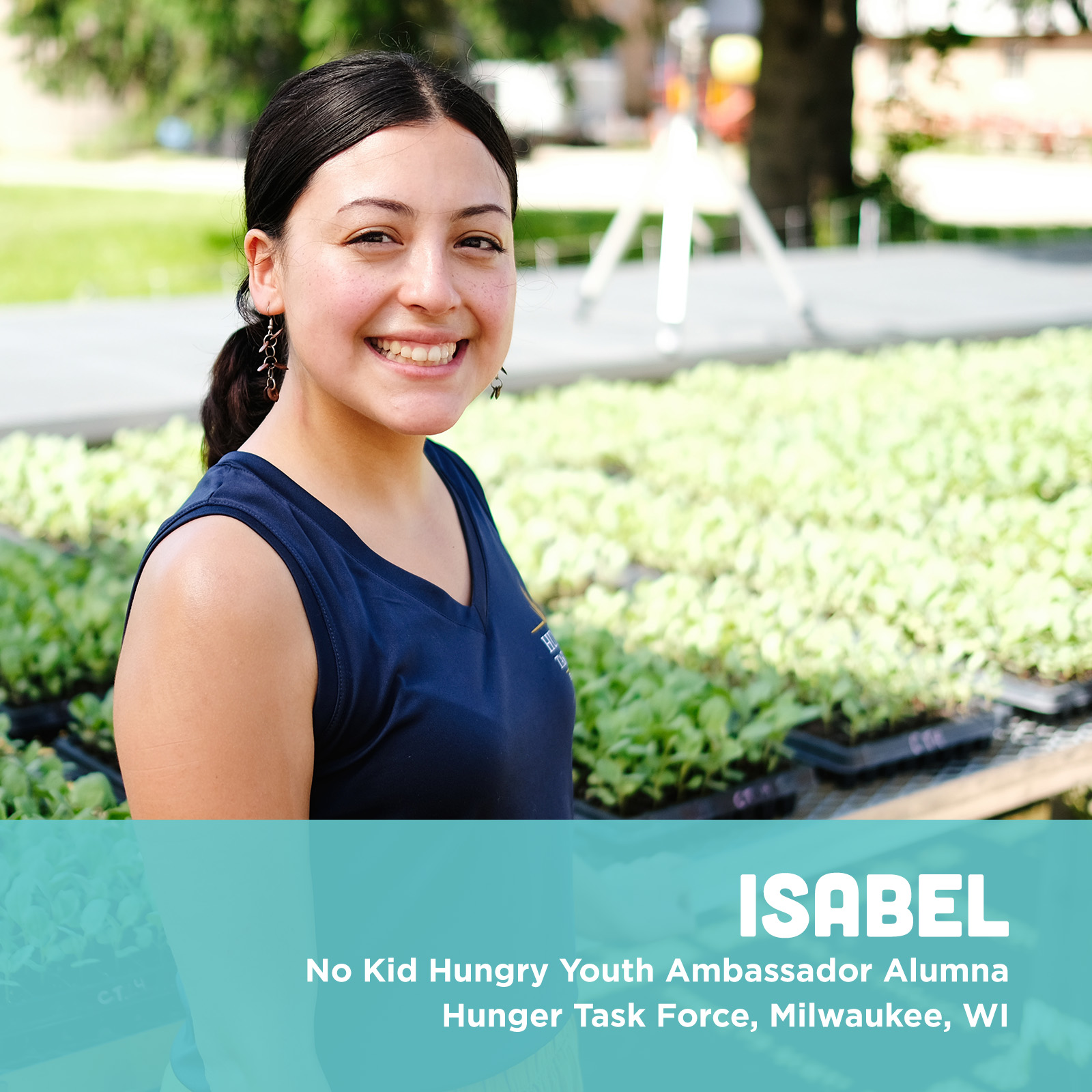

Taste was another big influence. Sixty-four percent of teens said school meals taste good and 55% described them as high-quality. While this may sound surprising due to documented concerns about the taste, quality and healthfulness of school meals—even despite the high nutrition standards set by the U.S. Department of Agriculture—it’s important to note that taste and quality were also factors that made 20% of teens say they were unlikely to get them.
Students say school meals are easy to get, let them eat with other students, are convenient and affordable.

Some of the reasons why teens were less interested in getting school meals ranged from feeling that the food is too processed and unappetizing to a perception that there’s a lack of nutritional value or vegetarian options.
Despite some unfavorable opinions, overall, positive impressions about school meals have grown since 2021.
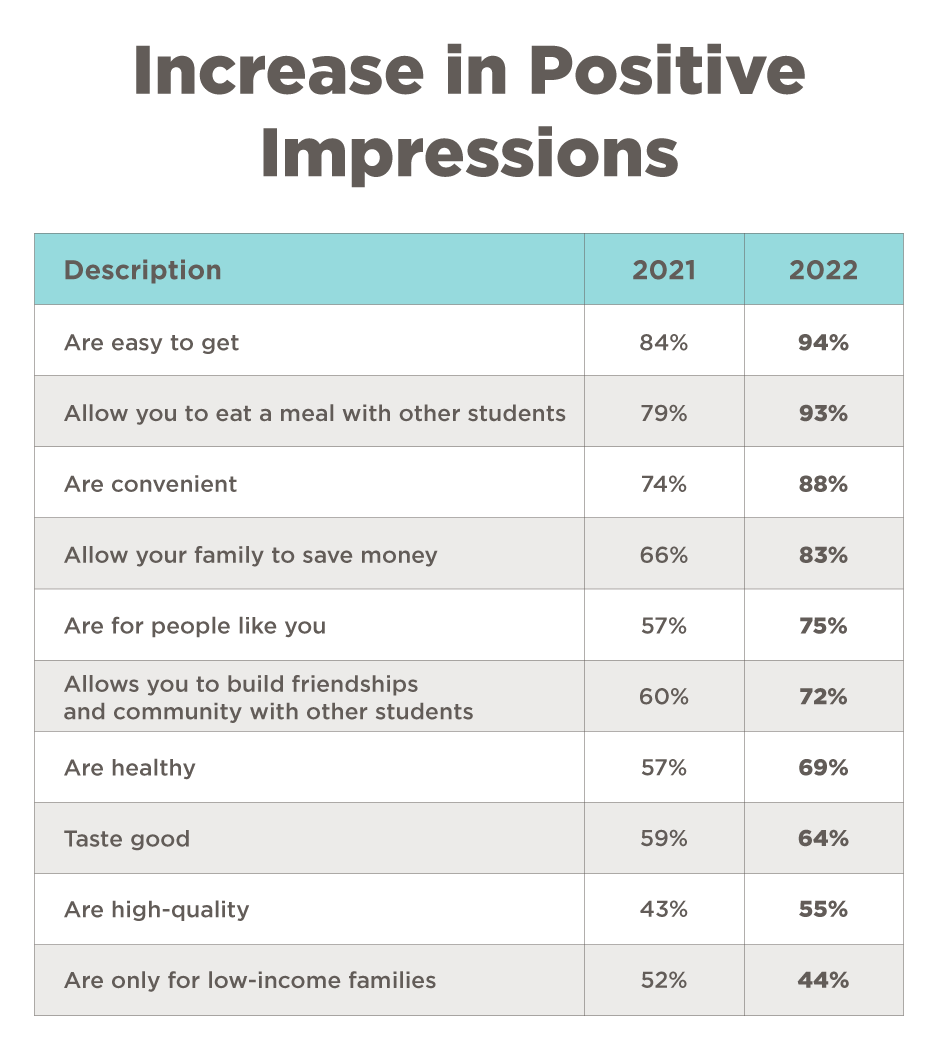
64% of teens said school meals taste good and 55% described them as high-quality.
Our teen survey participants received a list of factors that might make them more likely to want to get school meals, both during the school year and when school isn’t in session, including weekends and instructional breaks. Knowing that the meals contain food they enjoy eating, like the meals they eat at home; having access to free meals; and being able to view detailed information about meal options on a website ranked the highest.
Relative to 2021, being able to pick up meals when school is not in session has grown as a motivator
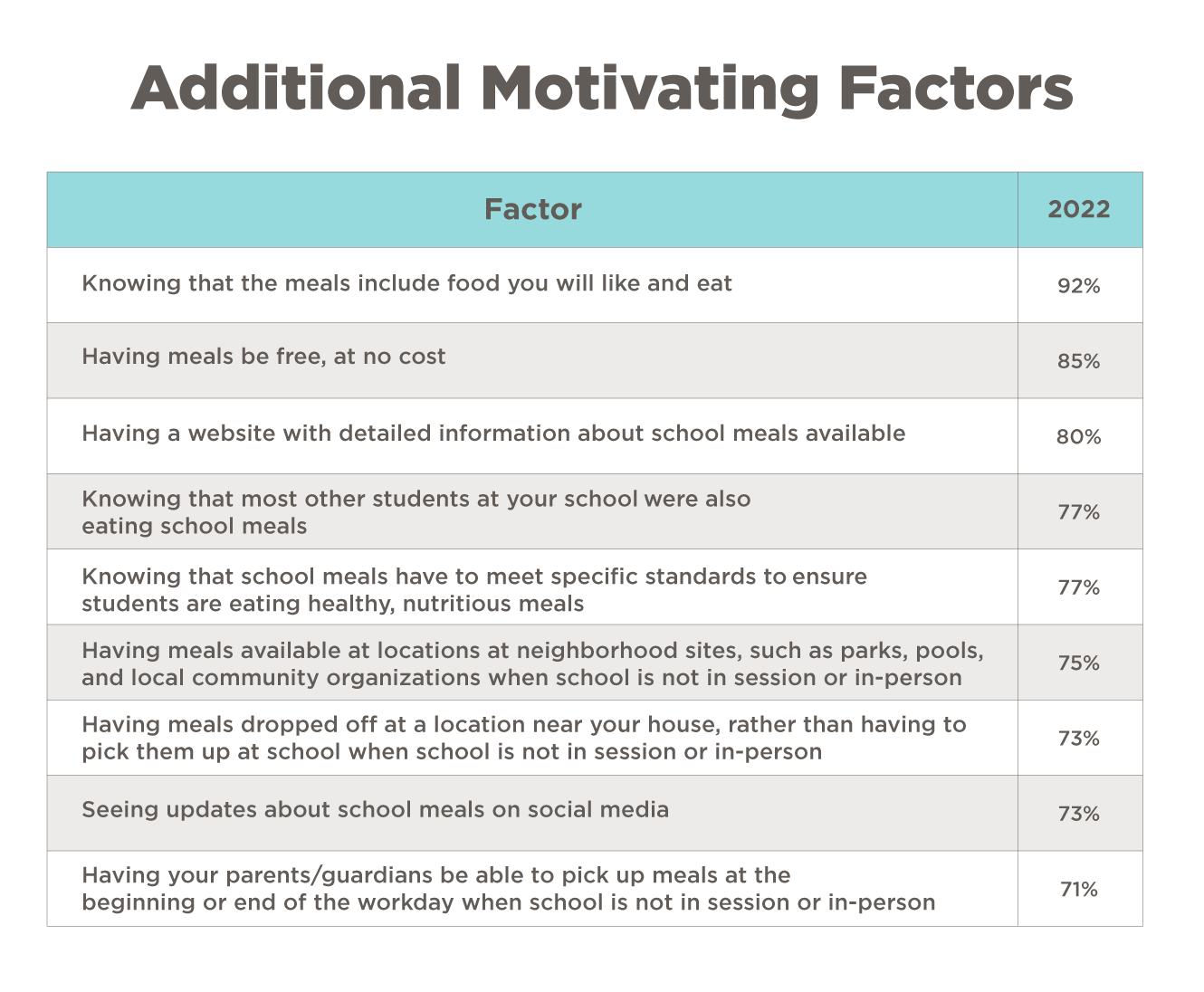
“I’m really proud of the staff that they’re giving meals and especially for halal food. It’s really helpful for Muslim people because they can’t eat the non-halal food. And also, because the school’s offering so many meals for the students. During the pandemic, [it] was very helpful, because as we know that healthy food, especially in Detroit, is very expensive.”
FatimaStudent in Detroit, MI
We learned that trusted adults—counselors, teachers, administrators, social workers, cafeteria staff and other adults who interact regularly with students—are a vital part of improving the school meals experience.
Our survey participants indicated that although they trust their parents, doctors, teachers and school nurses the most about school meals information and participation, they mostly receive encouragement to get school meals from their parents, teachers and cafeteria staff. With so many types of trusted adult messengers, who are consistent, dependable sources of support for youth, schools and communities have many opportunities to reach teens in different ways and influence young people’s attitudes about school and community meals participation.
Community Meals Offer Flexible Support
Schools aren’t the only source of food for kids whose families may need help. Many communities provide meals at parks, pools, public libraries and other neighborhood sites—especially during the summer months.
We learned that flexible access to food makes a tremendous impact on teens’ desire to get school meals. Eighty-three percent of teens said they would be more likely to eat school meals if they were available throughout the school day to help them decrease hunger. Sixty-one percent of teens said they would be more likely to get school meals if they were free and available during summer and winter breaks, and 75% said they would be more likely to eat school meals if they had access to them through local community organizations and neighborhood sites.
When students no longer have access to healthy food sources during the week because of school closures and breaks, community meals fill in the gaps. They’re a lifeline for teens whose parents or guardians are trying to stretch their monthly budget to cover necessary costs. For some teens a community meal may be the only full meal they’re able to eat that day because they don’t have enough food at home during school breaks.

Seventy-five percent of teens said they’d be more likely to eat meals if they were available in their neighborhood when school isn’t in session. Flexible options that appeal to teens include having meals dropped off at a location near their house, or their parents or guardians being able to pick up meals at the beginning or end of the workday when school isn’t in session or in-person.
Although a large percentage of teens said they would be likely to get school meals when school isn’t in session, we learned that few students are actively engaged with and aware of community-based organizations that could connect them with these types of meals. Only two in five teens said they’ve gotten a meal from a community organization.
Of the various types of community organizations that provide meals—church groups and religious programs, local libraries, after school or sports programs, summer day camps, or community and youth centers—students reported that they generally have the most contact with churches, libraries and community centers. However, our survey results revealed that students in urban areas are more likely to have contact with nearly all types of community organizations.
In fact, teens who live in cities reported that community organizations in their area provided meals during all school breaks while teens who live in suburban, small towns and rural areas reported that community-based organizations only provided meals primarily during summer break. However, two-thirds of teens across all demographics said they would be likely to get a meal at a community organization if they were available.
We also learned that younger teens are more likely to eat school and community meals than older teens (89% of 12-13-year-olds versus 79% of 17-18-year-olds) and that Spanish-speaking students (90%), are more likely than others to get school meals, both in and out of session, as well as meals from community organizations.
Factors that would influence a teen’s decision to get community meals are similar to those that would increase their likelihood to get school meals—the taste of the food, the ability to help their families save money, and convenience. But knowing they like the food is the biggest motivator.
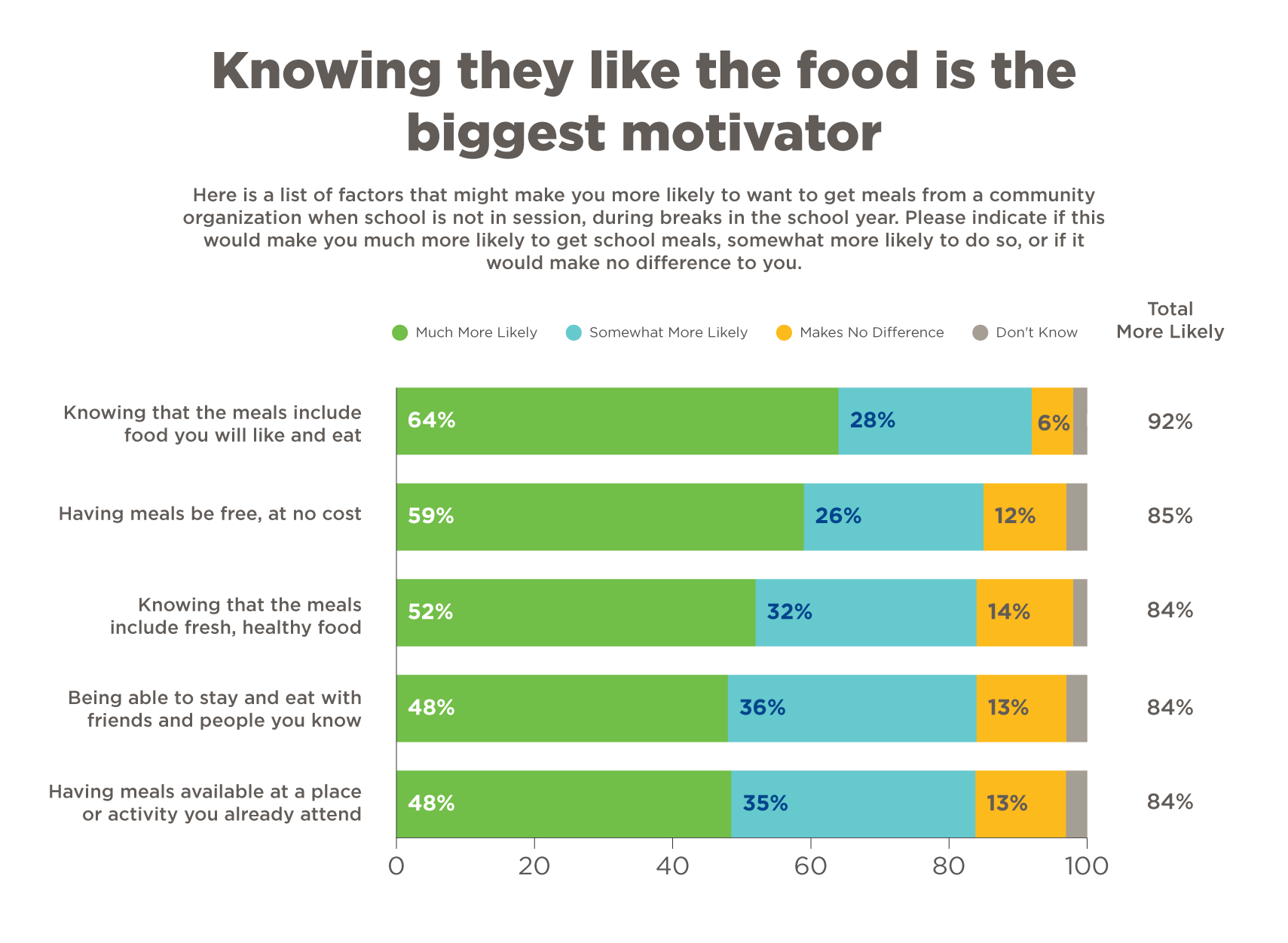
Youth Engagement Increases Participation
One of the biggest motivators that would encourage teens to eat school meals besides taste, convenience, affordability and the opportunity to socialize, is knowing that their school is listening to their views and opinions.
Eighty-seven percent of teens said they would be more likely to get school meals if they knew their school gathered feedback from students about how to improve them. Youth opinions and perspectives are invaluable, but when it comes to school meals, teens don’t have opportunities to provide their input or recommendations as often as they do other issues happening at school.
“I wish my school would do more surveys for feedback on school lunches. Surveys are the easiest way to do it because you can just put up a Google form and say, hey, can you scan this, and people will scan it. Also, they could say, we want all the homeroom teachers to do this. There are probably 30 kids, so you’d get most of the school to say, hey, that’s what I like.”
AydenYouth Staff, Waltham Boys & Girls Club, Waltham, MA
Although 86% of middle and high school students expressed great interest in providing feedback about their preferences for the types of foods served at school, and nearly 95% welcomed the opportunity to work with faculty and staff to share ideas and suggestions for improvement, 52% said that their school has never asked them for their opinion.
Most teens we surveyed reported that their preferred method of providing feedback would be through anonymous surveys and suggestion boxes. However, other methods of interest include small group conversations and focus groups, as well sharing feedback through student representatives who work with school staff.
Conclusions
Overall, our research revealed that teens have a positive outlook on school meals, that returning to in-person learning has made a huge difference in their desire to eat them, and that engaging students about their opinions with school and community meals through the help of trusted adults has the potential to increase their participation.
It’s clear that teenagers are open to eating school meals and many already are despite seeing a need for improvement. In addition to the opportunity to socialize with friends, students appreciate the convenience of school meals, and they see the value in decreasing the financial burden on their families.
Middle and high school students are eager to be involved in shaping and improving the school meals experience, but many feel that their school doesn’t value their opinions and they don’t feel heard. Schools can change this narrative and empower teens by keeping them informed about school and community meals participation opportunities, engaging them in conversations about the food they eat, and asking them to share feedback and ideas about their experiences.
Not only do trusted adults have the power to impact and increase school meal participation among teens, they also can expand access to community meals through targeted communication.
As we continue to support school and community meals programs across the nation and work toward eliminating childhood hunger, No Kid Hungry recognizes that partnering with youth, listening to their experiences and elevating their voices will help us ensure that every young person has a chance to reach their potential.
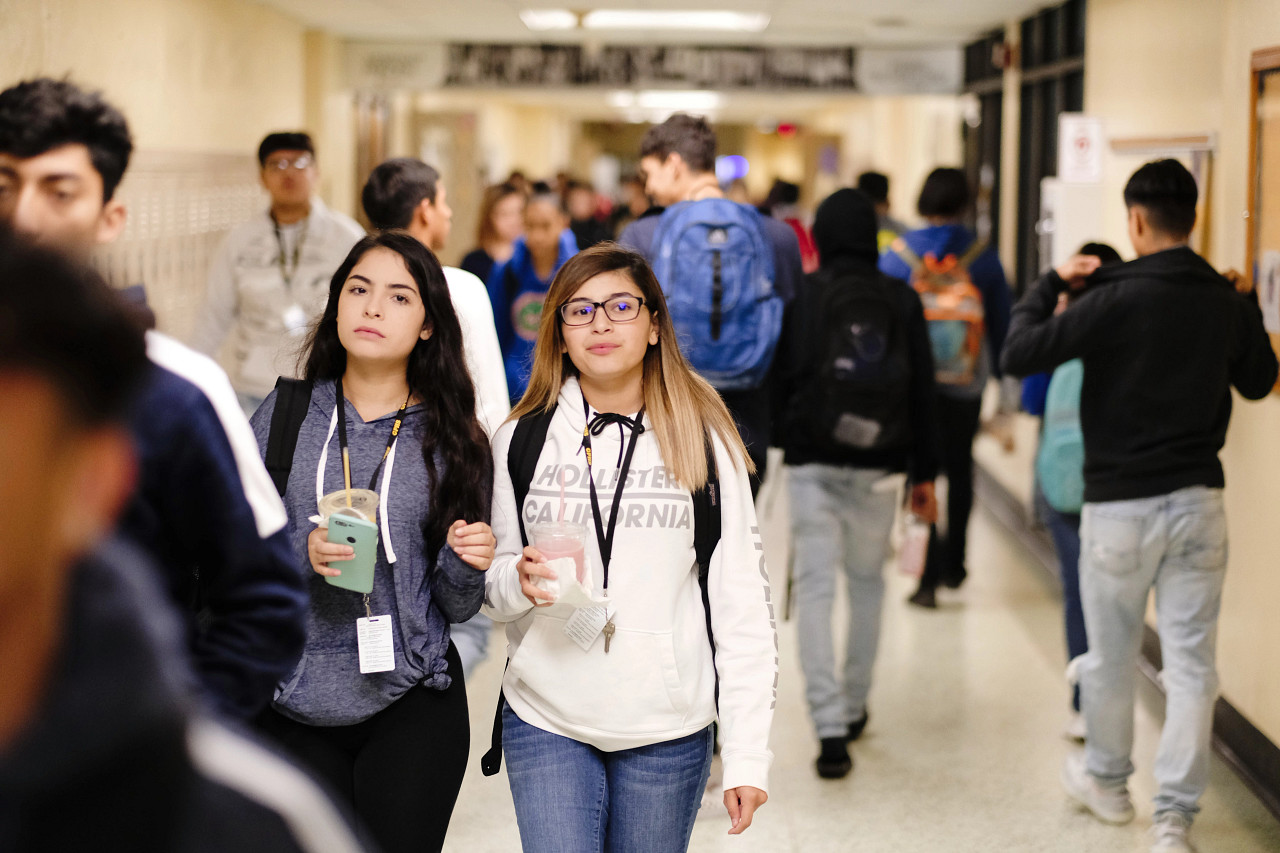
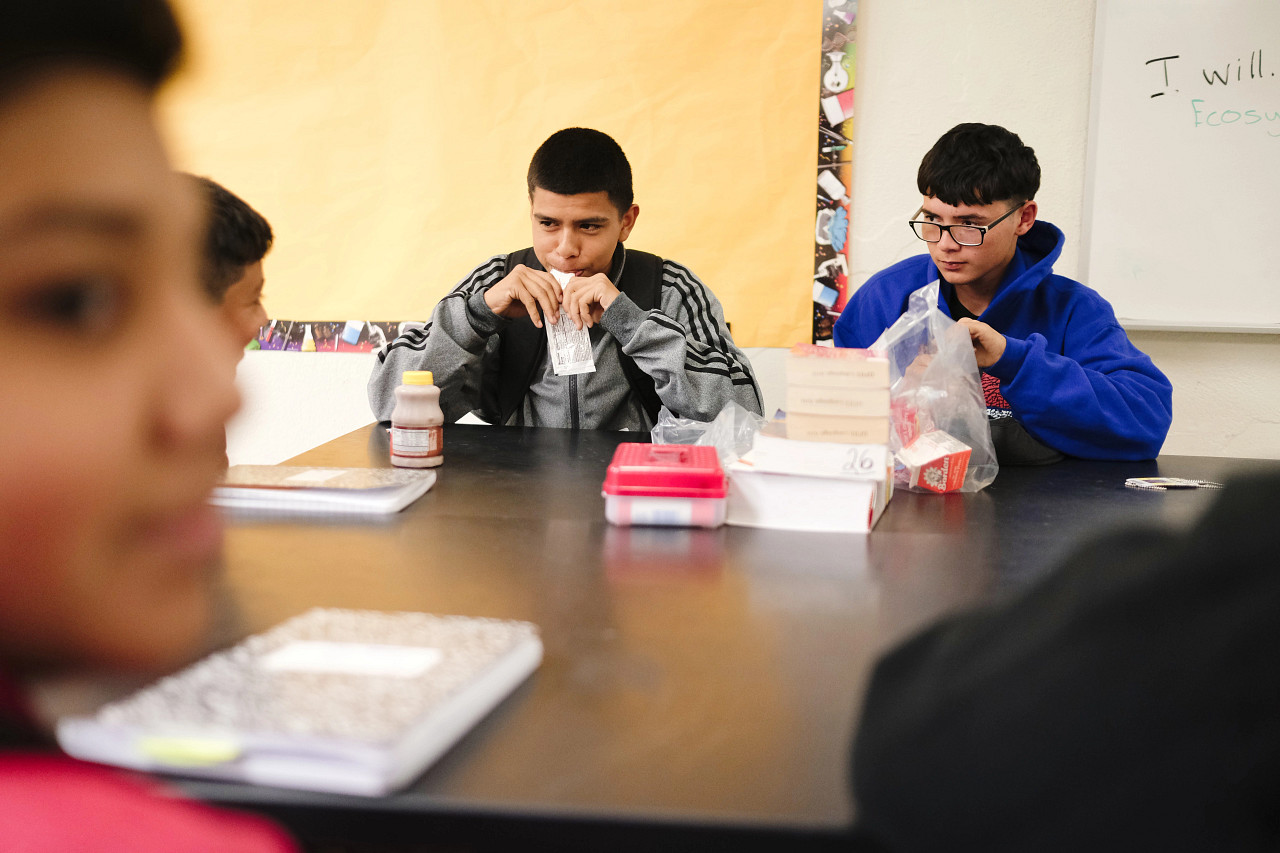
© 2022 Share Our Strength | 1401 Massachusetts Ave NW, Suite 400 Washington DC, 20005 | (800) 969-4767